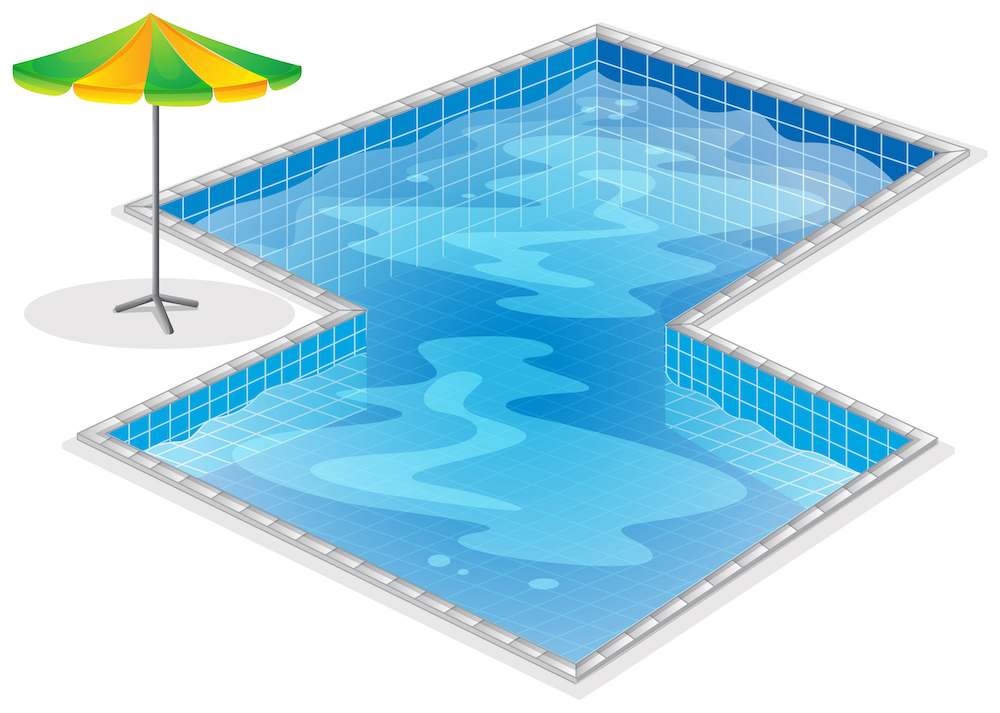
You can significantly reduce your pool heating costs by installing a solar pool heater. They win a cost competition with gas and electric pool heaters and have very low annual operating costs. However, solar pool heating is the most economical use of solar energy in many climates.
How do they work
Most solar pool heating systems include:
- A solar collector works as a device that makes the water in a pool circulating and heating by the sun.
- Filter – removes debris before water is pumped through the manifold.
- Pump – pushes water through the filter and manifold and back to the pool.
- The flow control valve is an automatic or manual device that diverts pool water through a solar collector.
So, the pool water is pumped through a filter and then through the solar collector. There the water is heated before returning to the pool. In hot climates, the collector can also be used to cool the pool during the peak summer months by circulating water through the collector at night.
Some systems include sensors and an automatic or manual valve to divert water through the manifold when its temperature is significantly higher than the pool temperature. When the collector temperature approaches the pool temperature, the filtered water simply bypasses the collector and returns to the pool.
Collectors for solar pools are made from different materials. To decide the type you need, just look at your climate and intention to use the collector. If you want to use the pool while temperatures are only above freezing, then you can take an unglazed collector system. But if not?
Unglazed collectors
There is no glazing in unglazed collectors. They are usually made of durable rubber or plastic that has been treated with an ultraviolet light inhibitor to extend the life of the panels. Because of their inexpensive parts and simple design, unglazed manifolds are usually cheaper than glazed ones. These unglazed systems can work even in indoor pools in cold climates if the system is designed to divert water back to the pool when not in use. Moreover, if you want to shut down the system in cold weather, unglazed collectors would be more cost-effective than installing a more expensive glazed manifold system.
Glazed collector
These systems powered by sunshine are generally made of copper tubing on an aluminium plate with an iron-tempered glass covering. This increases their cost. But these costs will pay back because, for colder weather, glazed collector systems show more capability. With their heat exchangers and transfer fluids, they capture solar heat more efficiently than unglazed systems.
In addition, they can be used year-round in any climate area. Glazed collectors also are good to heat domestic hot water year-round.
Both glazed and unglazed collector systems should have a kind of freeze protection if there are any climate opportunities for snow and icing.
CHOOSING A SOLAR HEATER
A solar pool heating system typically provides a payback period of 1.5 to 7 years, depending on your local fuel costs. They also tend to last longer than gas or heat pump pool heaters. Your real cost and return on investment depend on many factors. Therefore, before purchasing and installing a solar pool heating system, you should:
- Rate your site’s sunny resource
- Determine the correct system size
- Determine the correct orientation and incline of the manifold.
- Determine the effectiveness of the system
- Compare system costs
- Check local codes, rules, and regulations.
EVALUATING THE SOLAR RESOURCES OF YOUR SITE
Before you buy and install a solar pool heating system, firstly, you need to estimate the solar resource of your local area. The efficiency and design of a solar pool heater depend on how much solar energy reaches your construction site.
Solar pool heating systems use both direct and diffuse solar rays. Therefore, even if you do not live in warm and sunny climates most of the time – there still may be enough solar energy in your area. Basically, if your pool construction place has unshaded areas and generally faces south, this is a good candidate for a solar pool heating system.
Using the pool cover.
Your local solar system supplier or installer can perform solar system analysis. Solar system experts use worksheets and computer programs to determine system requirements and collector sizing.
Typically, the surface area of your solar collector should be 50-100% of the surface area of your pool. In cooler or cloudy areas, you may need to increase the ratio between collector area and pool surface area. The addition of collectors per square meter also extends the swimming season.
For example, a 15 by the 30-foot outdoor pool in Yorkshire typically requires a manifold that is 100% of the pool area for year-round use. This amounts to 450 square feet of collectors. In northern England, most people use outdoor pools 3–6 months of the year, so their systems typically account for 50–60% of the pool surface.
And for any climate, it is usually possible to reduce the required collector area by using a pool cover.
You will also need the correct size pool pump for the solar system.
POOL HEATING COLLECTOR PLACEMENT
Collectors can be installed on rooftops or anywhere near the pool to ensure correct exposure, orientation, and tilt towards the sun. Both the orientation and tilt of the collector will affect the performance of your solar pool heating system. You should consider this when evaluating solar energy at your facility and sizing your system.

